Records galore fell at Heritage Auctions' Greg Jein Collection sale of science fiction memorabilia last weekend, with the auction grossing US$13.6 million to surpass Christie’s 1999 auction of The Personal Property of Marilyn Monroe to become the second-highest grossing Hollywood auction in history, behind only Profiles in History’s blockbuster Debbie Reynolds Collection Auction trilogy (2011).
While the Debbie Reynolds Collection will most likely never be surpassed in magnitude as a Hollywood artifact collection (it was sold in three parts), the Greg Jein Collection is the largest collection of Science Fiction memorabilia ever held or ever likely to be held, and for fans of Star Trek and Star Wars (and Greg’s favorite non sci-fi indulgence, Batman) it was a walk down memory lane and the last big chance to obtain genuine screen-worn items from many of the original shows.
The sheer volume of valuable memorabilia in the $20,000 to $50,000 range was what drove this auction sale total to record levels, and this article is an overview of the auction designed to guide fans to the items that they will almost certainly remember and treasure from their childhood romance with space adventure and future technologies.
The star of the show
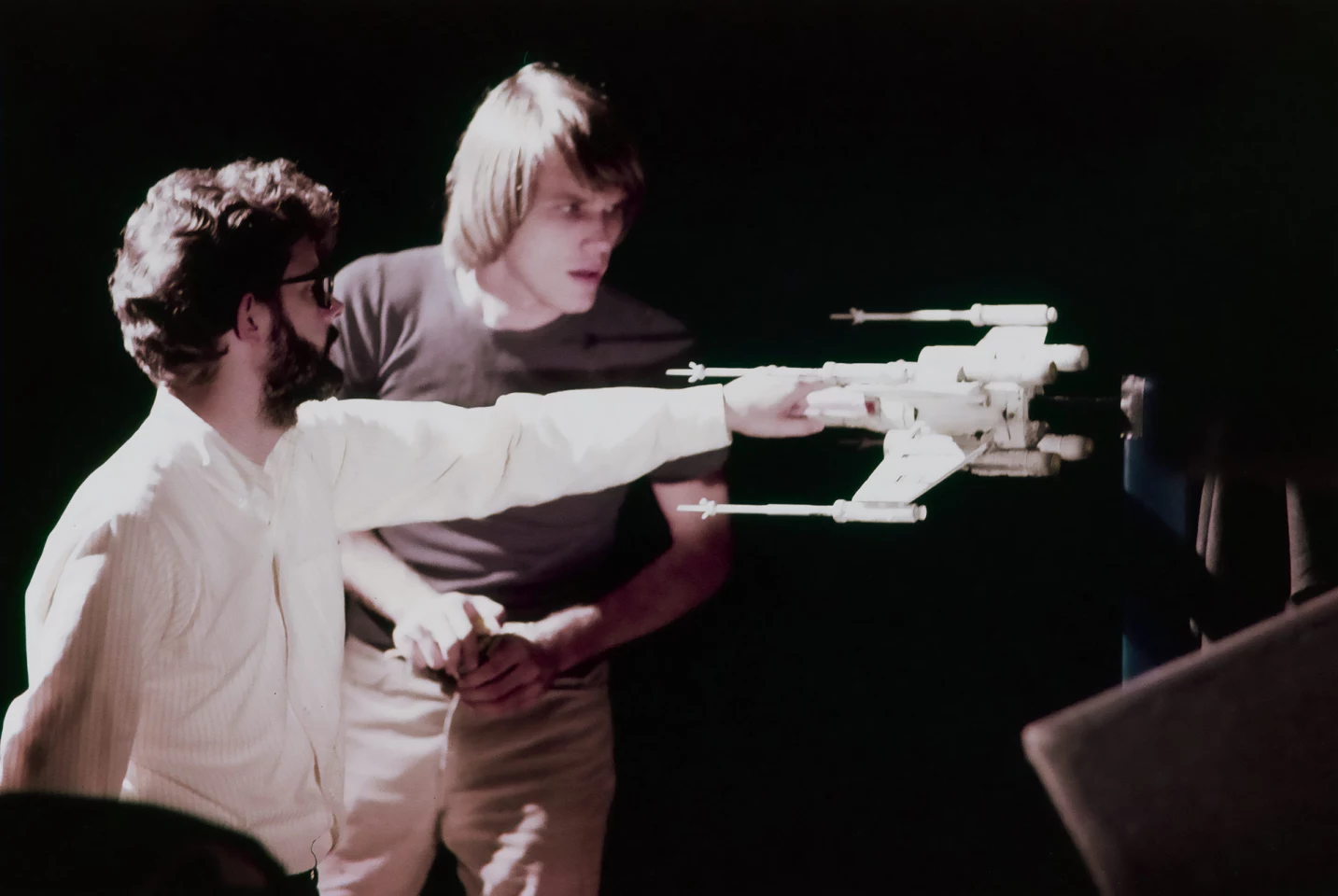
The star of the show was the "Red Leader" (Red One) X-wing Starfighter Filming Miniature from Star Wars: Episode IV- A New Hope (TCF, 1977) that sold for US$3.135 million, adding nearly a million dollars to the existing $2.375 million record for one of the coveted four "hero" models that was set in June 2022.
As we said in the preview of this sale, this model represents a landmark in storytelling technology. Industrial Light & Magic (ILM) was pushing the bleeding edge of this technology at the time this movie was made, and it won the Academy Award for Best Visual Effects specifically for this movie.
Model miniatures galore

If you built models as a kid, and/or still do, this is the area for you, because there's plenty of information in the auction descriptions about which movie each model was created for, and there's much wonder and excitement in every one of the models when you see it on screen. There were five models that fetched more than $100,000 each, and a dozen more that are worth some investigation to see how they were used to create illusion.
The best of the other space miniatures were the Starfleet Galileo Shuttlecraft Filming Model from Star Trek: The Original Series (Paramount TV, 1966-1969) that fetched $225,000 and the SS Botany Bay Filming model from the Space Seed episode of Star Trek: The Original Series (Paramount TV, 1966-1969) that sold for $200,000. The SS Botany Bay was the spacecraft used by Khan Noonien Singh, Star Trek's greatest villain, to escape Earth after the Eugenics Wars.
For those who remember the 1960s TV space opera Lost in Space (CBS, 1965-1968), one of two filming miniatures of the All-Terrain Chariot sold for $162,500. In a fascinating coincidence, the other known surviving filming miniature, also with tiny interior characters and ultra-detailed luggage strapped to the roof, sold for $93,750 earlier this year.
Science fiction that has become reality

One of the most interesting aspects of the sale was Jein's collection of tech props that were once portrayed as everyday items in science fiction, and have today actually become everyday items.
57 years ago, the Universal Translator Device portrayed in Star Trek was pure science fiction. It was used in episodes Arena and Metamorphosis of Star Trek: The Original Series (Paramount TV, 1966-1969). Nowadays such functionality is available to most of humanity by downloading an app onto their smartphone. This original prop was exhibited at the Smithsonian's "Star Trek: The Exhibit" in 1992-93 and it was also featured in the revered 1968 reference book The Making of Star Trek by Stephen E. Whitfield and Gene Roddenberry.

Another device that foretold future technologies when it was first used on screen in the mid-1960s was the Starfleet Tricorder from Star Trek: The Original Series (Paramount TV, 1966-1969). The original hero Tricorder (portable sensing-recording-computing device) was designed and built by the legendary artist, sculptor, model and miniature master Wah Chang, who created many of the props and alien creatures for Star Trek.
The hero Tricorder of the pair was one of two built by Chang and it was intended to be used for close up photography with enhanced design details as well as vastly superior fit and finish compared with later examples built on the Desilu/Paramount studio lot. Wah Chang provided an image of a Desilu Productions, Inc. invoice, dated June 21, 1966, paying him to build "Two tricorders @ $275.00 ea." for the 1991 book Inside Star Trek: The Real Story by Herbert F. Solow and Robert H. Justman). Of those two Wah Chang Tricorders that were built for $275 each in 1966, one sold for $175,000 and the other for $112,500.
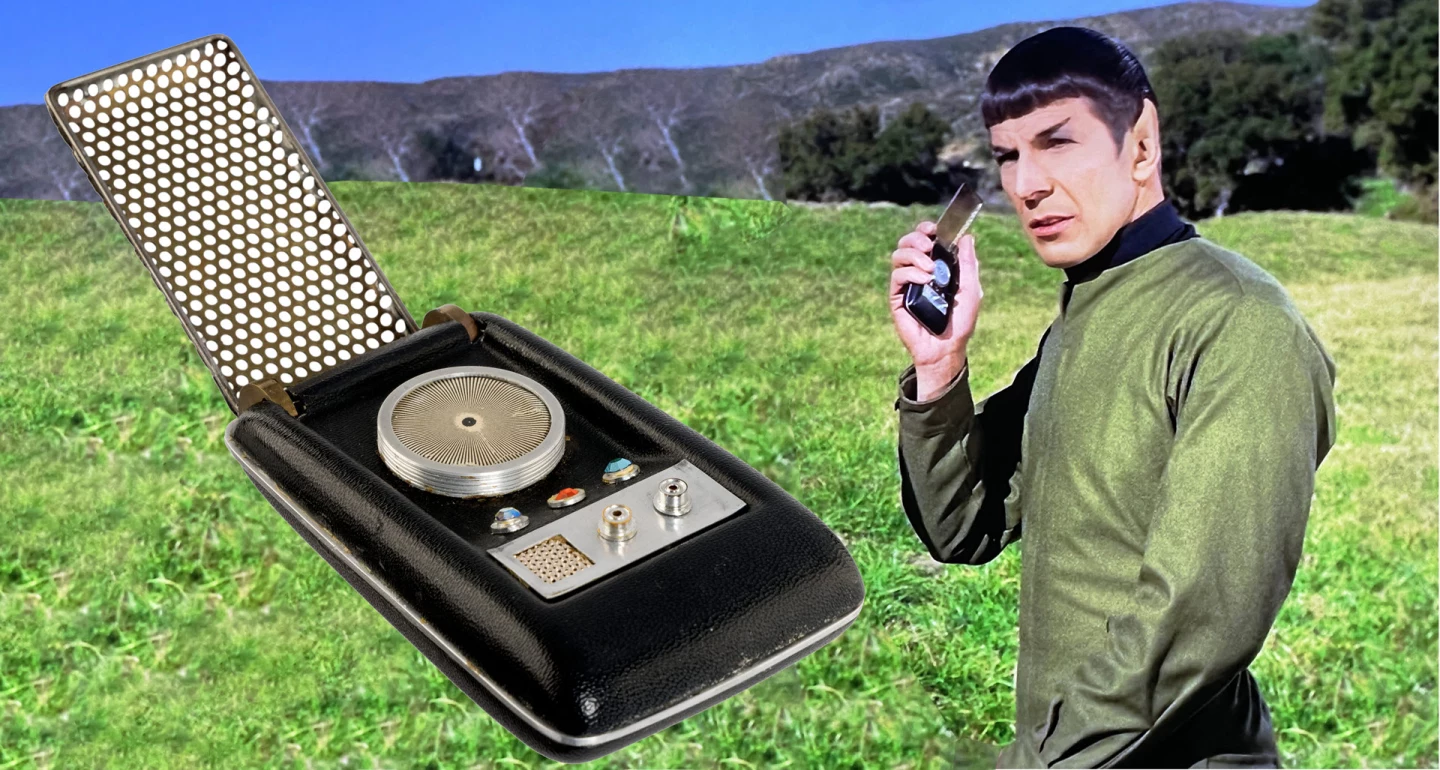
The first mobile phone call was still seven years away when the Starfleet Communicator first appeared on TV screens, and initially, mobile phones were the size of a small suitcase. It was a third of a century before we got flip phones that were the size of a Starfleet Communicator. Two of the original iconic devices sold at the Greg Jein Collection auction, one for $150,000 and the other for $100,000.
The original and the best Stormtrooper Costume

As expected, the Imperial Stormtrooper Costume from the same movie as the filming miniature sold for a record $645,000. Just to be clear, that's a record for a Stormtrooper costume, but given that Profiles in History (now part of Heritage Auctions) sold a Darth Vader helmet and mask for $1.125 million in 2019, it isn't a record for a Star Wars costume.
This is the "hero hero" costume retained for additional shooting and important promotional appearances during and post production, so the costume has its own provenance, appearing in the Donny and Marie Star Wars Special (1977), the Star Wars Holiday Special (1978), and the 50th Academy Awards (1978). It achieved its price because it is rich with history, and the most complete and best condition example known to exist from the first original Star Wars film (1977).
In the end, it could easily have sold for more.
A complete Space Suit from "2001: A Space Odyssey"
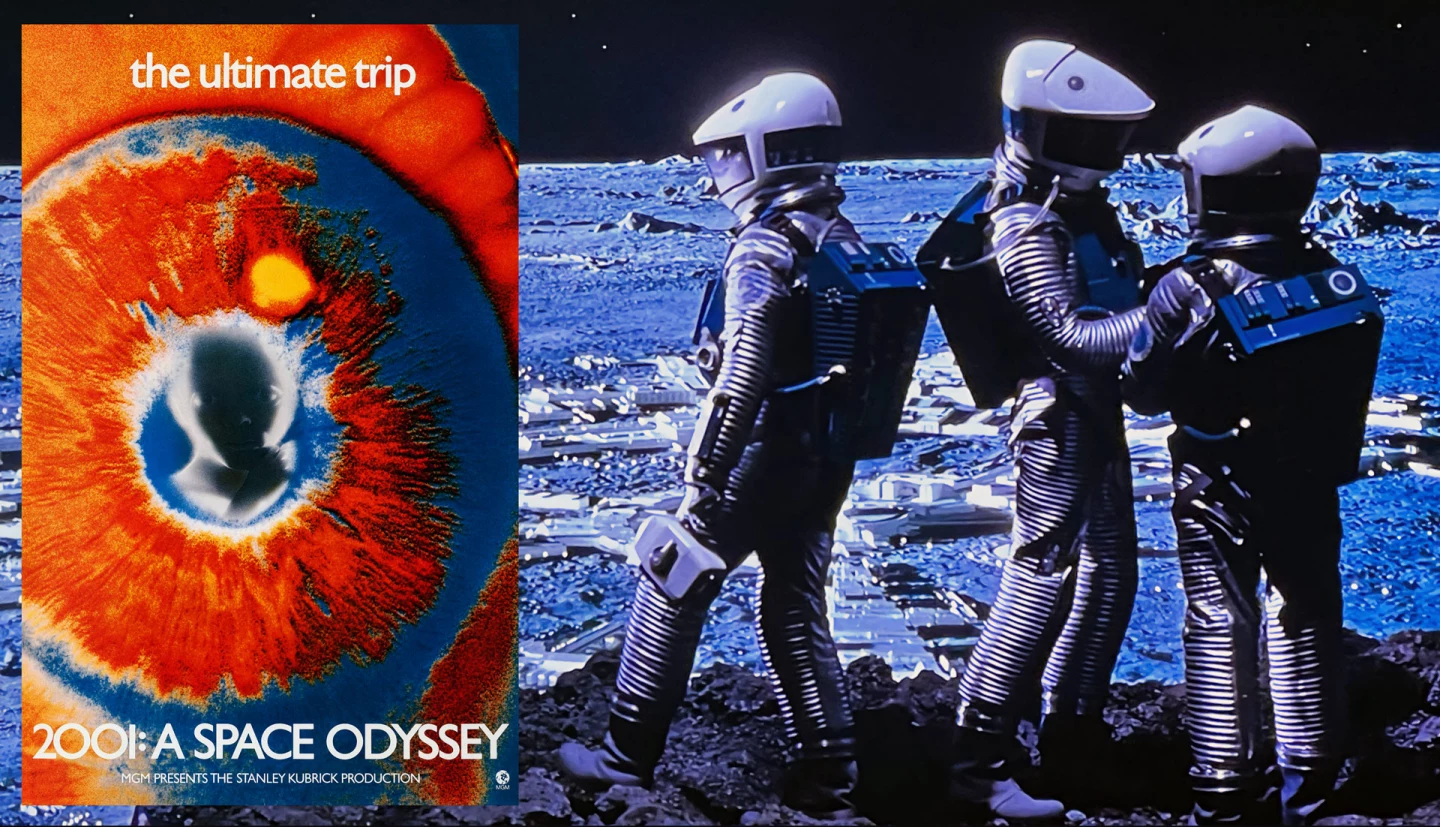
A Space Suit from 2001: A Space Odyssey (MGM, 1968) fetched $447,000 comfortably surpassing the previous record for any spacesuit, which is quite some feat as although the previous record was set by a space suit from the same Stanley Kubrick masterpiece, 2001: A Space Odyssey (MGM, 1968), that suit included the helmet worn by Dr. Dave Bowman (Keir Dullea) the central human character in the movie. That helmet represents the height of screen worn memorabilia as it was worn in the sequence in which Bowman reenters the antechamber of the Discovery surrounded by banks of circuit breakers leading to the "brain room" and logic center to “kill” the HAL 9000 computer in one of the most famous science fiction scenes of all time. This was the helmet Bowman was wearing as HAL spoke the words, “Stop Dave. Stop Dave. I am afraid. I am afraid Dave."
Hence surpassing the $370,000 is quite some feat and indicates once more that while truth may be stranger than fiction, fiction costs more than the real deal when it comes to space suits.
Captain James T. Kirk's Wardrobe

As expected, the extensive Star Trek wardrobe collection yielded some remarkable prices, with the blue Mr. Spock tunic from the show's third and final season and Captain Kirk's (William Shatner) field uniform from Star Trek II: The Wrath of Khan both fetching $150,000.
Two other Captain Kirk (Shatner) costumes cracked the $100,000 mark, being a Dress Starfleet Ensemble from Star Trek VII: Generations (Paramount, 1994) that fetched $103,125 and a two-piece Starfleet Ensemble from Season 3 of Star Trek: The Original Series (Paramount TV, 1966-1969) that fetched an even $100,000. Not surprisingly, Captain Kirk costumes were by far the most popular, with other costumes worn by Shatner selling for $93,750, $93,750, $93,750, $84,375, $68,750, and the cheapest of the Captain Kirk uniforms fetching a healthy $40,000.
The entire Star Trek Wardrobe and more

Several other Spock (Leonard Nimoy) outfits sold for substantial figures, including one Season 2 Starfleet tunic for $57,500, and another for $50,000, while another Spock outfit sold for $26,250 while one of his Vulcan Robes fetched $21,250, a Vulcan Lute played by Spock from Star Trek: The Original Series (Paramount, 1966-1969) sold for $40,000, and a set of foam latex Vulcan Ear Tips worn by Leonard Nimoy as Spock fetched $15,625.
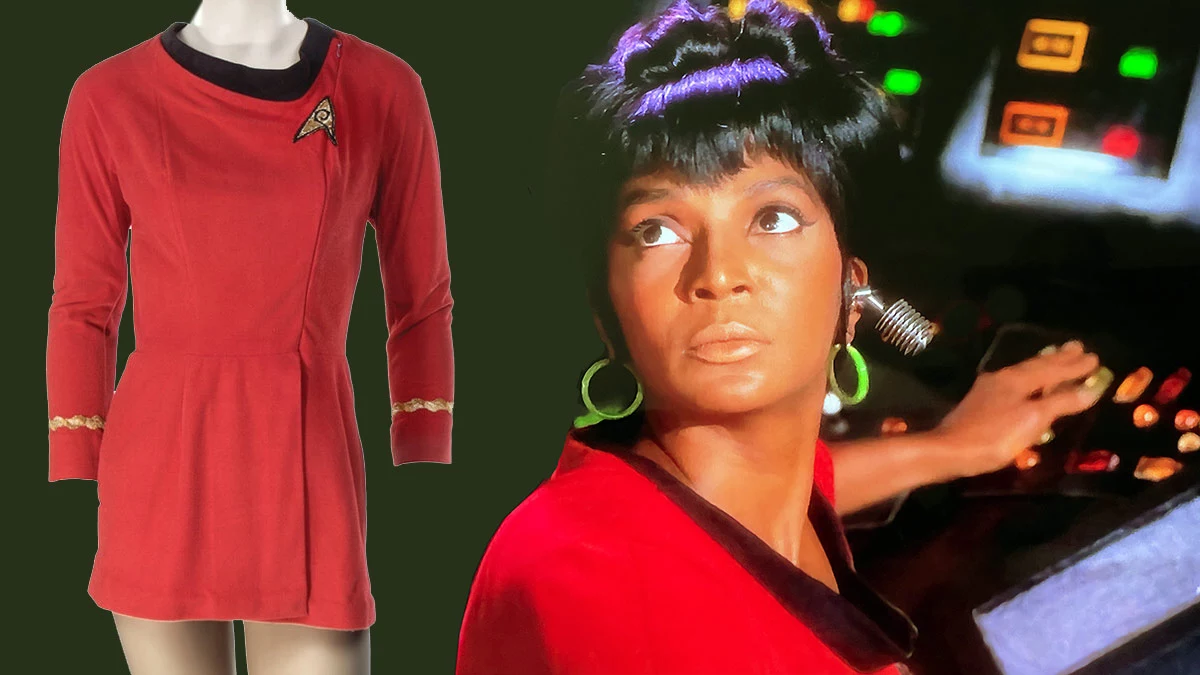
Lieutenant Uhura’s (Nichelle Nichols) Duty Starfleet uniform with boots from early in Season 1 of Star Trek: The Original Series (Paramount TV, 1966-1969) fetched $62,500, while an almost identical dress from Season 3 sold for $42,500.
This is one of those moments where you realize that different auction genres have created different perceptions of the worth of objects. By Star Trek and Star Wars standards, Lieutenant Uhura’s gear is well down the scale compared to the wardrobe prices commanded by screen-worn Darth Vader and Captain Kirk, but it is among the most valuable female clothing ever sold at auction. Film and fantasy and entertainment memorablia sells for far more than real life memorabilia.
Yet another fascinating reflection of these auction prices, was the sale of one of Lieutenant Uhura’s screen-worn signature Communications Earpieces that sold for $32,500. When Lieutenant Uhura was wearing her 1960s earpieces, Bluetooth was still one third of a century away (33 years exactly) and Apple's first generation Airpods were one half of a century away (50 years exactly).

Of the remaining crew members of the USS Enterprise, Captain Jean-Luc Picard’s (Patrick Stewart) Starfleet uniform from Star Trek: The Next Generation (Paramount TV, 1987-94) fared best with a sale of $87,500, and Dr. McCoy’s (DeForest Kelley) Season 1 Starfleet Tunics from Star Trek: The Original Series (Paramount TV, 1966-1969) sold for $55,000, $47,500, $35,000, $30,000, $20,000 and $17,500.

One of the surprise best selling costumes in the Greg Jein Collection was the "Seven of Nine" outfit worn by Jeri Ryan as the Borg drone who was freed from the Borg's collective consciousness in Star Trek: Voyager (Paramount TV, 1995-2001). The costume was apparently a nightmare to wear, even if it did ensure she still had not been freed from the audience's consciousness two decades later.
Beam me up Scotty!

The term "Beam me up Scotty" far outgrew the "Star Trek" series, and indeed the character named "Scotty" who was Captain Kirk's chief engineer, Montgomery "Scotty" Scott. Actor James Doohan who played Scotty became surprisingly averse to the term in his private life. Scotty’s (James Doohan) red velour top and black trousers outfits sold for $55,000, $40,000 and $22,500 at the sale
B-9's feet sold for $350,000

Another area where science fact has quickly overtaken science fiction is in the domain of robotics, and since humanity's initial conception of robots just 103 years ago was piqued in a stage play, our ideas have almost all been shaped by the science fiction we have consumed. Not surprisingly, humanoid robots have helped to ease the stress on the collective consciousness, at the same time as enabling them to hide the human being inside them.
In case you didn't already know, all of the major robots (e.g. Robby, B-9, R2-D2 and C-3PO) in television/movie science fiction up to and including Star Wars have been little more than robot suits with an actor inside. Regardless, those robots gained considerable respect in 2017 when Bonhams sold Robby the Robot from the landmark 1956 sci-fi movie Forbidden Planet for $5.3 million (our preview - our report - auction page) and Profiles in History sold an R2-D2 made with components from the original Star Wars movie trilogy for $2.76 million.

Robby was purpose-built for Forbidden Planet, and his $135,000 construction costs accounted for seven percent of the movie's $1.9 million budget which in today's money would be roughly $1.5 million. Now Robby the Robot was designed by film/television production designer and art director Robert Kinoshita, who also designed B-9 for Lost in Space with a far-more-modest 1965 budget of $70,000 - roughly $500,000 today. Perhaps illustrative of the relative entertainment industry perception of the importance of the two robots, when Variety magazine reported the death of Kinoshita in 2015, the headline read "Robert Kinoshita, Designer of ‘Lost in Space’ Robot, Dies at 100", while acknowledging Robby and Forbidden Planet in the first paragraph.
Hence, we rate B-9 as one of history's most significant robots which at least partially explains why his treaded feet sold for an astonishing $350,000 at the Greg Jein Collection sale. Now it gets even stranger from there, because it seems that in the early 1990s, the owner of the original hero B-9 Robot from Lost in Space commissioned Jein to build a B-9 replica using the original studio molds for the torso, legs, arms and the clear bubble.
That working (but never used on screen) B-9 was sold in immaculate condition for $237,500 earlier this year, at the same time that the lower-waist rig of the original hero B-9 sold for $212,500, the blueprints ($87,500), the original molds ($57,500), the original leg section ($50,000), the original grill mouth of B-9 ($27,500), B-9's "Brain Dome" mold ($27,500), B-9's Hero Brain and Miscellaneous B-9 Parts ($15,000), plus more parts and blueprints and artifacts from the original which are too numerous to mention. Add all those bits together and you have the whole original robot suit and a working replica for around $1.2 million. It is highly unlikely that those parts went to the same place, because there's a whole industry building B-9 replicas and the sale of the Greg Jein Collection has no doubt reinvigorated it once more.
Commando Cody's Helmet and Mask

An indication of just how inspired Greg Jein's Collection was, is this wonderful "spaceman's helmet" that was a prop from several science fiction movie serials. A movie serial was one of the earliest forms of motion pictures and it was a popular platform for science fiction "space operas" such as Buck Rogers and Flash Gordon during the 1930s. Each chapter was screened at a movie theater for one week, and ended with a cliffhanger, in which characters found themselves in perilous situations with little apparent chance of escape. Viewers had to return each week to see the cliffhangers resolved and to follow the continuing story.

The first serial that the helmet was used in was King of the Rocket Men. The helmet and rocket man suit created for the serial were subsequently re-used in other unrelated movie serials such as Radar Men from the Moon (1952), Zombies of the Stratosphere (1952), and finally Commando Cody: Sky Marshal of the Universe (1953). The helmet's appearance in four different science fiction movie serials explains why it fetched such a handsome price.
Movie Weapons
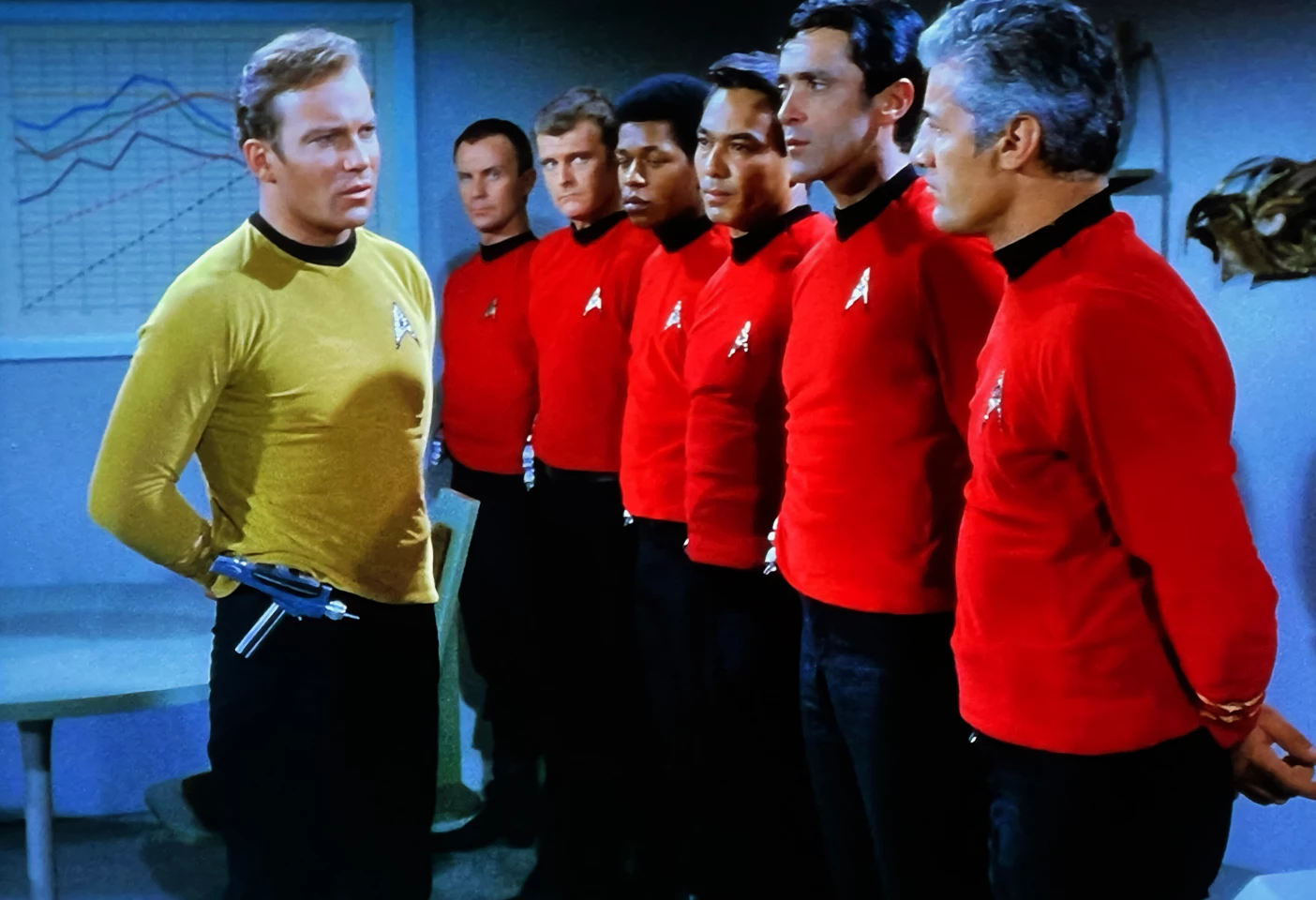
We had it figured that this "Hero" Type-2 Phaser Pistol from Star Trek: The Original Series would be the top selling weapon of the auction, which it was, but it fetched $187,500 and became the third most valuable specimen of the gun. The last one to go to auction fetched $250,000, and the previous Type-2 Phaser sold for $192,000.























